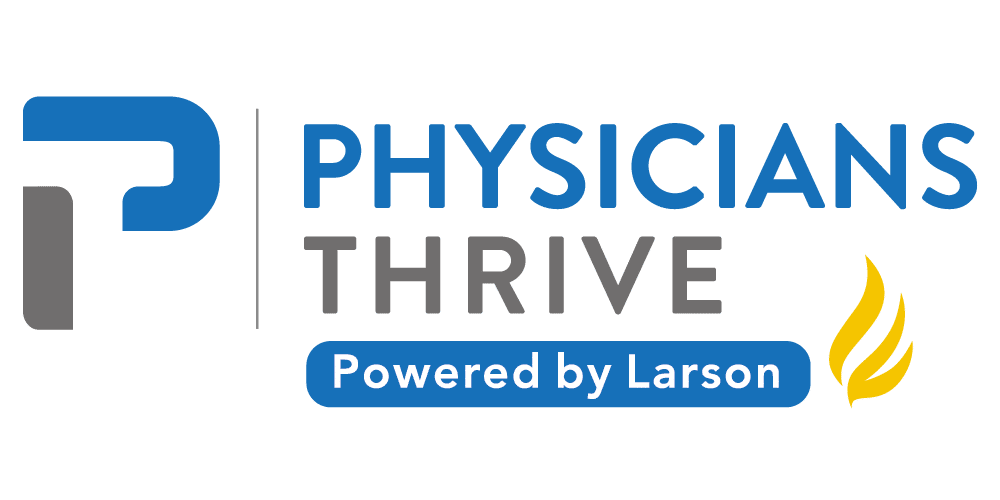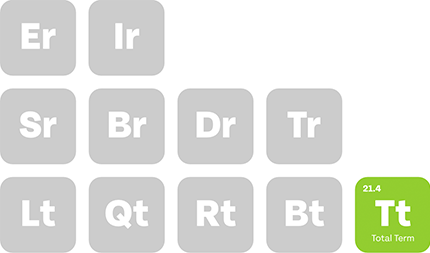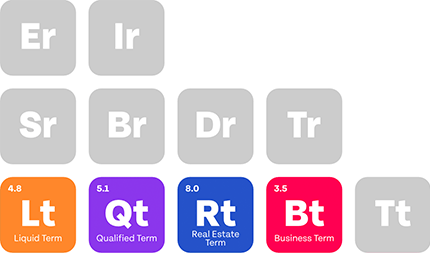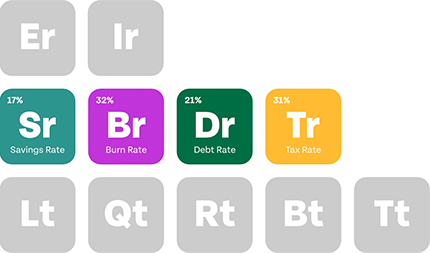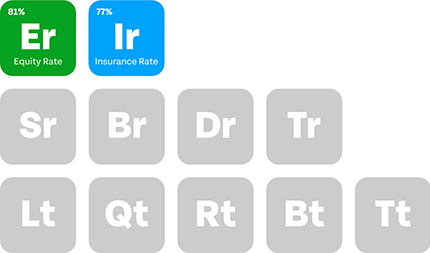Key Takeaways
- Disability insurance covers 50–80% of income if a disability prevents working.
- Policies differ significantly, offering short-term (3–12 months) and long-term (2 years to retirement) coverage.
- Qualifying conditions include severe illnesses, injuries, chronic and mental health disorders; exclusions apply.
- Policy riders, like COLA and future increase options, customize coverage for physicians’ financial needs.
Disability insurance is a group of policies that covers between 50% and 80% of an individual’s income when they can’t work due to a qualifying disability.
Like any type of insurance, the basic process works the same: pay a monthly premium and guarantee a good percentage of your income if you can no longer do it yourself.
In practice, there’s a lot more to it, such as figuring out what decides the coverage percentage, what a qualifying disability is, and what the types of disability insurance are.
There are also rules regarding the “partial” ability to do your job.
After all, not every disability puts someone completely out of business.
With all these factors in mind, it can become difficult to know what type of disability you should go for or whether it’s worth applying for disability insurance in the first place.
In this guide, we’ll break it all down.
Table of Contents
Types of Disability Insurance
The disability insurance market offers two primary types of coverage:
Short-Term Disability Insurance (STD)
STD addresses temporary work interruptions, providing benefits for around 3–12 months after a brief elimination period of 7–14 days.
This coverage typically comes through employer-sponsored group benefits and helps bridge income gaps during recovery from surgery, pregnancy complications, or acute injuries.
Long-Term Disability Insurance (LTD)
LTD offers more substantial protection for severe or permanent disabilities, with benefit periods extending between two years up to retirement age.
However, these policies activate after a much longer elimination period (90–180 days).
They’re also often purchased individually by high-income professionals (like physicians) seeking tailored coverage.
Since LTD has many more variables to its name, it’ll be the prime focus of our guide.
We’ll focus on these six aspects to help break it down.
1. The Policy Components
Any disability insurance policy consists of three primary components: the monthly benefit amount, the benefit period, and the elimination period.
The Benefit Amount
This is the monthly payment you’ll receive while disabled, and it ranges between 60–70% of your pre-disability income.
The purpose of this limitation is to manage insurance costs and maintain incentives for rehabilitation whenever possible.
For individually purchased policies, these benefits are generally tax-free, effectively replacing a higher percentage of after-tax income.
The Benefit Period
Long payments continue through the benefit period, with options ranging from two years up to 65 years or even lifetime benefits for certain disabilities.
Longer benefit periods have higher premiums but offer a lot more protection against catastrophic disabilities.
The Elimination Amount
This is the waiting period before your benefits begin.
Most people select 90-day elimination periods to balance premium costs with financial preparedness.
Extending the elimination period to 180 days can reduce premiums by 20–25%, but it requires a lot of savings to bridge the gap.
2. The Premium Calculation Factors
Insurance companies determine the premium based on several risk assessment factors:
- Occupational class: Higher-risk professions often pay more premiums.
- Age and health status: Younger and healthier individuals often pay less premiums.
- Benefit specifications: Larger payments and longer durations raise premiums.
- Policy features: More comprehensive definitions increase the premiums.
- Rider selections: Additional riders will further raise the premiums.
Note: Most insurers classify occupations ranging from lowest risk (like executives and office professionals) to highest risk (like construction workers and manual laborers).
This classification often becomes the most impactful factor on the premium amount.
3. Definition of the Disability
The technical definition of disability is the most consequential aspect of any policy, as it can determine whether your condition is deserving of benefit payments. These definitions vary in stringency and directly impact claim eligibility.
Here’s how.
Own-Occupation vs. Any-Occupation Coverage
An own-occupation policy pays benefits if you can’t perform the specific duties of your current occupation, even if you can work elsewhere.
For example, a neurosurgeon with hand tremors who can no longer perform surgeries but can still teach would still receive full disability benefits despite earning income from academic teaching.
There are also modified own-occupation policies, which provide benefits if you don’t perform your specific duties AND you are not working elsewhere.
In our example, the neurosurgeon would lose their benefits if they accepted the teaching job.
Finally, we have the any-occupation policy, which is the most restrictive and pays benefits only if you cannot perform any job suited to your education, training, or experience.
In our example, the disabled surgeon must demonstrate the inability to perform any reasonable occupation to qualify.
Note: Many LTD policies implement a transitional approach, applying the own-occupation definition for the first 24 months before shifting to the more stringent any-occupation standard.
This creates a critical review period at the two-year mark when many claims face termination.
Partial Disability and Residual Benefits
Some policies address partial impairments through specialized provisions.
This is particularly valuable for progressive conditions or during rehabilitation periods, preventing professionals from facing an all-or-nothing decision between remaining on claim or returning to work.
Partial disability provisions provide proportional benefits for reduced work capacity:
- It’s typically calculated as a percentage of the total disability benefit.
- It often requires a minimum percentage of income or capacity loss.
- It may require a period of total disability before partial benefits activate.
- It’s often limited to 6–24 months of coverage.
On the other hand, residual disability benefits offer more sophisticated protection based on documented income loss:
- It calculates benefits as a percentage of the income reduction (e.g., 50% of lost income).
- It requires verification of earnings through tax documentation.
- It often continues until the income loss falls below a threshold percentage.
Related: The 5 Best Disability Insurance Providers in 2025
4. Qualifying Conditions
Many conditions can hinder your ability to work effectively, but not all of them are considered a covered disability that can qualify you for benefits.
That being said, disability coverage encompasses a broad spectrum of physical issues, mental impairment, and chronic conditions that impede work capacity.
Physical Impairments
Qualifying physical impairments can include but not be limited to:
- Musculoskeletal disorders : the leading cause of disability claims, accounting for approximately 30% of long-term disability cases. These include chronic back pain, severe arthritis, and degenerative disc diseases.
- Cardiovascular conditions : heart disease, stroke recovery, and hypertensive complications. Their sudden onset often creates immediate disability with unpredictable rehabilitation timelines.
- Neurological disorders : Multiple sclerosis and Parkinson’s disease are dominant disorders in disability claims because of their progressive nature and compound effect on an individual’s quality of life.
Other common physician conditions leading to disability claims include:
- Back injuries and disorders.
- Cancer.
- On-the-job accidents and related injuries.
Mental Conditions
Depression, anxiety, and PTSD represent a growing proportion of claims.
However, most policies limit mental health coverage to 24 months unless the condition results from organic brain disease.
Mental health coverage typically addresses:
- Major depressive disorder affecting occupational functioning.
- Anxiety disorders create work limitations.
- Trauma-related conditions impairing performance.
- Bipolar disorder disrupting consistent work capacity.
- Severe psychological stress conditions.
Chronic Illnesses
Autoimmune diseases like rheumatoid arthritis, lupus, and multiple sclerosis lead to complicated disabilities because of their relapsing-remitting patterns.
In other words, they allow periods of normal work interrupted by acute flares, which is why partial disability provisions are especially useful for this condition.
Endocrine disorders like uncontrolled diabetes can also result in disability through direct complications or secondary effects on vision, circulation, and kidney function.
5. Limitations and Exclusions
Disability insurance doesn’t cover everything. Here are some of the exceptions:
- Self-inflicted injuries: disabilities resulting from suicidal attempts or intentional self-harm.
- Criminal activity: disabilities occurring during illegal activities.
- Pre-existing conditions: limitations for conditions present before policy issuance.
There are also considerable limitations on mental conditions and substance abuse.
Regarding mental conditions, benefits are typically capped at 24 months.
Exceptions may apply for organic brain disease that requires hospitalization, and premium options may extend or remove this limitation. However, this is variable by policy.
As for substance abuse, benefits are also limited to a single lifetime claim period that maxes out at 24 months.
More often than not, you have to participate in treatment programs to qualify, and some policies exclude coverage for substance abuse entirely.
6. Policy Riders
Standard disability policies provide foundational protection, but you have the option of customizing your policy using riders to address specific financial vulnerabilities.
Here’s a look at the essential policy enhancements.
Cost of Living Adjustment (COLA) Rider
This feature increases benefit amounts annually to counteract inflation, typically adjusting 1–3% annually or indexed to the Consumer Price Index.
This may not seem like much, but for a 35-year-old facing a potential 30-year claim period, even modest inflation could erode benefit purchasing power by 50% without this protection.
Future Increase Option Rider
This provision guarantees the right to purchase additional coverage regardless of health changes, protecting insurability as your income grows throughout your career.
You can secure the right to increase coverage as your earnings grow, regardless of health changes.
Catastrophic Disability (CAT) Rider
CAT provides additional benefits for severe impairments requiring substantial assistance with daily activities.
It can provide benefits of up to 100% of pre-disability income and addresses costs associated with custodial care needs.
Retirement Protection Rider
The retirement protection rider replaces retirement plan contributions during disability with funds directed to a trust account with investment options.
It addresses long-term financial impact beyond immediate income replacement by protecting retirement security.
Secure the Best Disability Insurance With Physicians Thrive
Your occupation as a physician makes disability insurance far more important than other lower-risk occupations.
You’re practically dealing with infectious diseases for a living, after all.
If you haven’t paid your student loans back yet, you’ll have to worry about managing your finances, living expenses, and paying your premiums as well.
For the best help you can get, you need someone who has already been in the shoes you’re expecting to fill, and that’s what Physicians Thrive is all about.
Contact us so we can assess your specific situation and guide you to the most suitable disability insurance.

